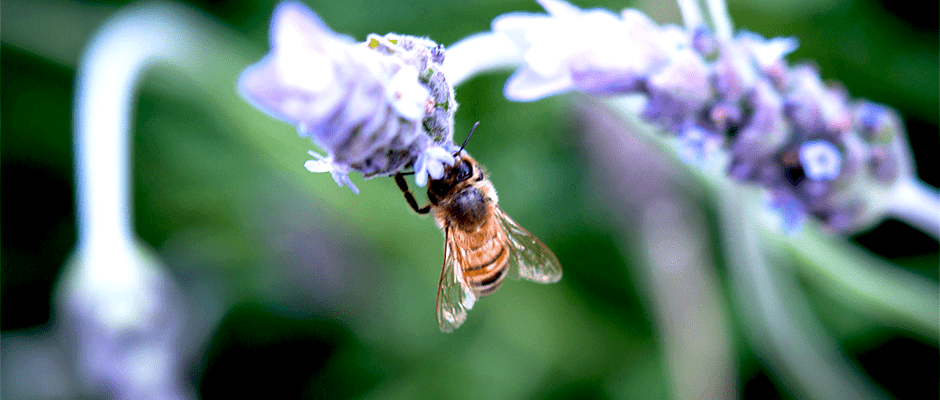Share this article
Grants create habitat for pollinators
Tagen Baker’s organic farm in California is bustling with life. It’s not just the historic acres of walnut trees on the property, or the fields of lavender, or the heirloom vegetables coming up out of the ground.
It’s lots of bees and bats, butterflies and hummingbirds, which are attracted to the lavender and California wildflowers she’s planted in her pollinator garden.
“I’ve seen more than I ever thought,” said Baker.
The inspiration for the farm came in part from graduate work she is conducting at Utah State University in the Department of Environment and Society. Its name, Bitton Farm, came from her great-grandfather, who started a family ranching legacy in southeast Idaho.
With a Feed a Bee grant from Bayer Bee Care, Baker created a half-acre pollinator garden, with lavender and wildflowers to lure birds and butterflies. The Feed a Bee initiative focuses on planting forage for pollinators and offers grants to support the establishment of additional sources of nutrition and habitat across the country. Projects must promote pollinator health, include an education or outreach component and provide a tangible solution to the current lack of forage.
Since 2015, the program has helped to plant some 3 billion flowers, from a rooftop garden at the University of the District of Columbia to sunflowers and wildflowers along interstates in North Carolina. To date, more than 100 organizations in 45 states and Washington, D.C. have received Feed a Bee grant funds. The organizations honored include community groups, universities, parks, beekeepers, wildlife refuges and more.
South Dakota Game, Fish and Parks also received a $5,000 grant to buy wildflower seed to create 20 acres of pollinator habitat on 10 game production areas in the northeast corner of the state.
“We’ve been really active in our area planting pollinator habitat,” said Chris Goldade, regional habitat program manager for the department. “We’ve seen all the news out there about the reduction of pollinators, the trouble with bees and the monarch butterfly possibly listed as a threatened or endangered species.”
But there’s another reason to create pollinator habitat on game production areas, Goldade said. “There’s a lot of research out there that pollinator habitat is also beneficial to pheasant chicks,” which eat the invertebrates the habitat attracts. And pheasants (Phasianus colchicus) are one of the state’s top game bird species.
Goldade is also the youth coordinator for the local Pheasants Forever chapter. He hopes to bring local schoolchildren out to help with the plantings and teach them about the importance of supporting pollinators, as well.
Header Image: Lavender and wildflowers at Britton Farm attract bees and other pollinators. ©Tagen Baker








